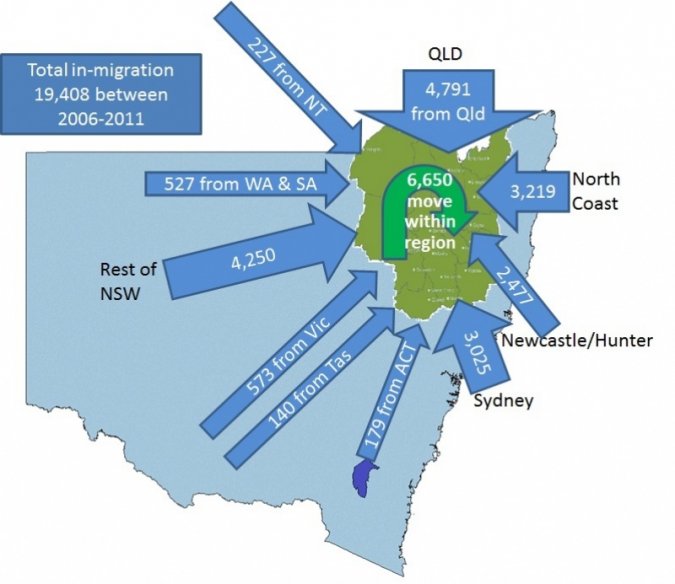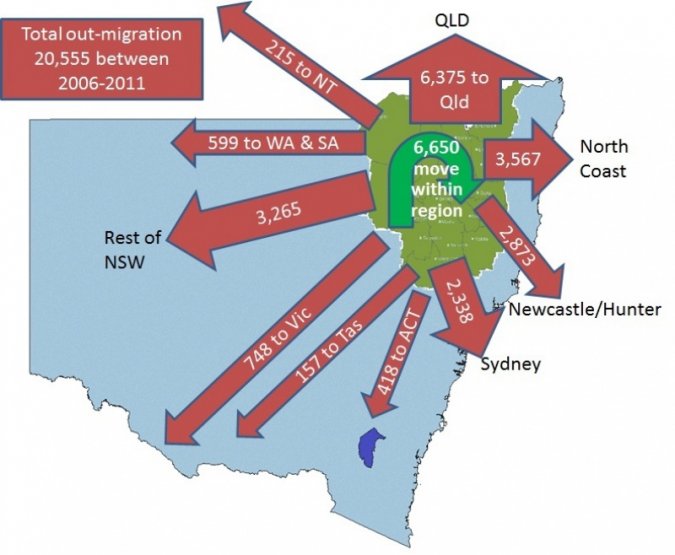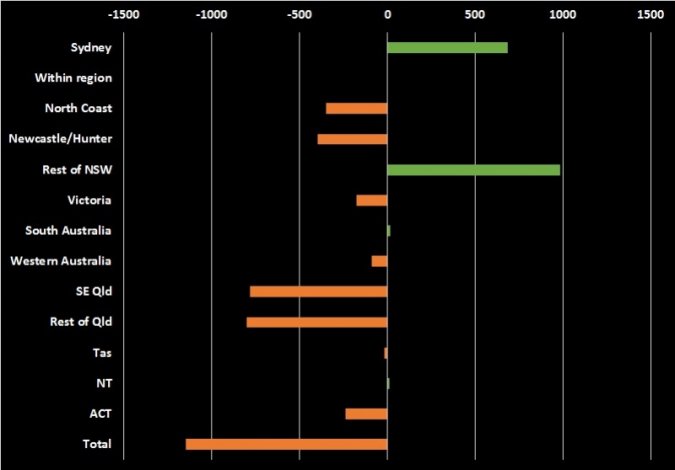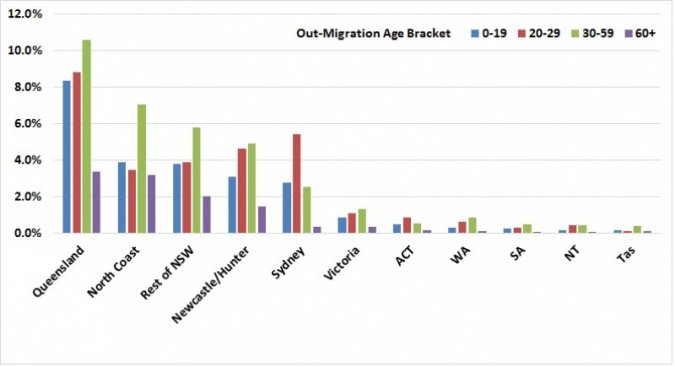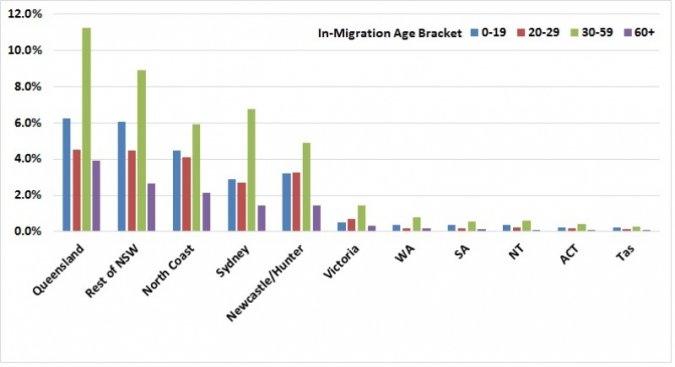-
Featured Items
-
Featured Resources
 Funding & Grants
Don't miss out on funding opportunities. Stay informed with our up to date online listings and email notifications.
Read More
Funding & Grants
Don't miss out on funding opportunities. Stay informed with our up to date online listings and email notifications.
Read More
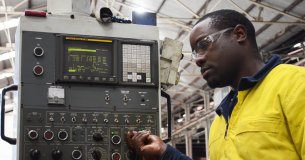 Skilled Migration
Our services help both applicants and employers, to learn more, develop plans, submit applications, and settle in.
Read More
Skilled Migration
Our services help both applicants and employers, to learn more, develop plans, submit applications, and settle in.
Read More
 Research and Analysis
Good research and analysis makes the case. How can our resources and services help your project or application?
Read More
Research and Analysis
Good research and analysis makes the case. How can our resources and services help your project or application?
Read More
 Information & Data Resources
With resources like REMPLAN, Regional Knowledge Base, and decades of data, discover how we can help your project.
Read More
Information & Data Resources
With resources like REMPLAN, Regional Knowledge Base, and decades of data, discover how we can help your project.
Read More
-
Stay InformedSubscribe to one or more of our regular email subscriptions, to be kept up to date on news and funding opportunities for the region
-
-
Our Region
- Our Region
- Regional Plan
- Regional Data
- Current Regional Issues
- Population Migration Analysis for 2016-21
- Job Vacancies Continue at All-Time High
- National Debt - What it Means for Our Economy?
- The True Value of Home Solar
- The Economic Impacts of Local Government Amalgamations
- State of the Regions Report 2014-15
- Antifragility - A different take on regional economic development
- Biohubs - Collaborative Waste Management
- Attracting New Residents
- Socio-Economic Impacts of the Murray Darling Basin Plan
- Murray Darling Basin Water Recovery
- Growing Businesses
- The Northern Inland Economy
- Geographical Overview
- Major Industry Sections
- Our Services
- Grants and Funding
-
Skilled Migration
- Skilled Migration
- Skilled Employer Sponsored Regional Visa
- Skilled Work Regional Visa (subclass 491)
- Temporary Seasonal Workers
- Designated Area Migration Agreement (DAMA)
- Helpful Information for Visa Holders
- Information for Employers
- Case Studies
- Payment Details
- Advice & Further Information
- Contact Details
- News & Events
-
Our Projects
- Our Projects
- Current Projects
- Skilled Migration
- Wool Works - Wool Training Schools
- Metal Works - Welding and Fabrication Schools
- Come On Inland
- Stories of Resilience
- Alt Brothers Beekeeping - Glen Innes
- Carelle's Toy Store - Glen Innes
- Greenhill Orchards - Arding
- Gwydir Meats - Warialda
- Kaputar Motors - Narrabri
- Moonbi General Store - Moonbi
- Sandstock - Tingha
- Sherelle Fashions - Tenterfield
- Sleepy Merino - Inverell
- Tenterfield Chamber of Toursim, Industry and Business - Tenterfeild
- The Welders Dog - Armidale
- Walcha Veterinary Supplies - Walcha
- AGCAP - Agribusiness Careers & Professions
- Northern Inland Regional Investment Profile
- Past Projects
- Digital Economy Strategy
- Business Growth Project
- Go Digital
- How to Start an Online Business
- Create Your Website Using Squarespace
- How to Edit Your Squarespace Site - Part 1
- How to Edit Your Squarespace Site Part 2
- Add a Shop to Your Squarespace Site
- Start a Blog and Find out What Customers are Searching
- 14 Tips For a Better Blog Post
- Which Social Media Platforms are Best for Your Business
- How to Use Facebook Effectively For Your Business – Part 1
- How to Use Facebook Effectively For Your Business – Part 2
- Instagram Tips for Business
- Catching Up, More Instagram & Dealing with Haters
- Getting Started with Twitter for Business
- Social Media Scheduling Tools
- How to Start an Etsy Shop – Part 1 – Research
- How to Start an Etsy Shop – Part 2 – Signup
- Online Security for Your Business
- Product Photography and Website Images: Your Guide
- 5 Tips to Improve your Productivity in your Business
- Best Online Business Resources
- How to Improve Your Communication Skills and Win More Clients
- NBN Coordinator
- Putting Power Back in the Regions
- Road Freight Study
- Town Audit Benchmarks
- Food and Wine
- Youth Survey
- Digital TV Switchover Assistance
- Northern Inland Transport Guide
- Live.Train.Work
- Northern Inland Innovation Awards
- Northern Inland Innovation Awards - 2017
- Northern Inland Innovation Awards - 2016
- Northern Inland Innovation Awards - 2015
- Northern Inland Innovation Awards - 2014
- Northern Inland Innovation Awards - 2013
- Northern Inland Innovation Awards - 2012
- Norther Inland Innovation Awards - 2011
- Prime Super Northern Inland Innovation Awards - 2010
- Prime Super Northern Inland Innovation Awards - 2009
- Northern Inland Innovation Awards - 2007
- Northern Lights Project
- NBN Smart Home
- Murray Darling Basin
- Moree Plains Business Workshops
- Namoi Investment Prospectus
- Industrial Land
- Bioenergy and Local Electricity Retailing
- Northern Inland Business Energy Assessment
- Skills for the Future
- Impacts of COVID-19 on Businesses
- Past Projects of NIRDB
- Aboriginal Employment and Enterprise in the Gunnedah Region
- Art as an Industry
- Aviation Survey
- Farm Forestry - Northern Inland Forestry Investment Group
- New England North West Film Strategy
- Northern Inland Excellence in Business Awards
- Food and Wine 2003 - 2008
- Prime Super Northern Inland Innovation Awards 2009
- Regional Business Networking Program
- Regional Leadership Course 2008
- Viticulture Strategy 2002-2003
- About Us
- Contact Us
- Other Resources
- Privacy and Legal
- Search
- Our RegionOur Region
- Current Regional IssuesCurrent Regional Issues
- Attracting New ResidentsAttracting New…
Attracting New Residents to the Northern Inland
Summary
Attracting new residents from capital cities to regional areas has long been a key weapon in the regional economic development armoury. However, a closer examination of the migration data for Northern Inland NSW from the 2011 Census indicates that it may be a tactic in need of a re-think, as most of our new arrivals do not come from Sydney, though Sydney does remain an important source of net inward-migration.
Background
Regional Economic Development activity often includes the task of attracting new residents and businesses to a region.
At RDANI, we take the view that while there is probably more mileage to be gained from helping existing businesses to grow, there is little doubt the tree and sea-change phenomenon can’t be ignored. Worn out capital city folk can sell their properties for a small fortune, and pick up a better property in Northern Inland NSW for a fraction of the cost.
At present, there are three main campaigns running in NSW to attract residents to our region:
- The Country and Regional Living Expo, which runs over two days in Sydney. This is squarely pitched at attracting city-weary residents to regional NSW, and is especially targeted at young families. Local government is one of the major exhibitors at the Expo.
- The Evocities program aims to attract capital city dwellers to the regional cities of Albury, Armidale, Bathurst, Dubbo, Orange, Tamworth and Wagga Wagga, hence covering two of the 13 LGAs in our region. This is largely an on-line promotion mechanism which includes information about services, lifestyle, jobs and housing with links to other local information sources.
- Our RDANI ComeOnInland program, which promotes the benefits of living in the Northern Inland region more broadly, largely via a digital marketing campaign (website, Facebook), but is not targeted at any particular region or demographic. This is a new initiative still under development, and the analysis below sheds more light on where the campaign could be directed.
There are other programs which assist people to relocate to regional areas including:
- The Skilled Migration Program, run by the Commonwealth Department of Immigration and Citizenship to help fill skill shortages in regional areas and allow immigrants on temporary visas to progress to Australian permanent residency if they meet the skill and job requirements;
- The NSW government, through the Office of State Revenue offers a relocation grant of $7,000 for people relocating from metropolitan to regional areas who meet specified conditions.
However, the information provided in the next section suggests that it is not just capital city residents we should be targeting in an attempt to grow our populations and businesses.
Migration Facts
The recent 2011 Census data (ABS 2011) allows us to drill down into the migration data and see where in-migrants come from, and where out-migrants go to. These statistics are based on a person’s usual place of residence 5 years ago (i.e. in 2006).
New Arrivals to the Region
Figure 1 shows the main sources of new migrants (19,408 people in total) to our region.
This information reveals:
- The major source of population movement within our 13 Local Government Areas is from within the region – people moving from one Northern Inland LGA to another;
- The largest source of new residents from outside the region is Qld (4,791 new arrivals), with 43% of these people (2,061) coming from South East Qld (including the Gold Coast, but not Brisbane);
- 734 new arrivals came from Brisbane;
- After Qld, other areas of regional NSW are the next largest source of new residents (4,250);
- The third largest source of new residents is the North Coast of NSW (the LGAs of Ballina, Bellingen, Byron Bay, Clarence Valley, Coffs Harbour, Greater Taree, Kempsey, Kyogle, Lismore, Nambucca, Port Macquarie, Richmond Valley and Tweed), with Coffs Harbour providing the most residents (556);
- Sydney (3,025) and Newcastle/Hunter (2,477) are ranked fourth and fifth respectively as a source of new residents.
Departures from the Region
Figure 2 shows the main destinations of people leaving our region (20,555 people in total).
Figure 2 reveals:
- Again, the major source of population movement within our 13 Local Government Areas is within the region;
- Qld is by far the most popular destination for people who leave, and 45% of those people re-locate to south east Qld, with Toowoomba taking 830 former Northern Inland residents;
- The North Coast of NSW took 3,567 residents;
- Other parts of regional NSW took 3,265 residents;
- The Newcastle/Hunter region and Sydney were the fourth and fifth ranked most popular destinations for out-migrants.
Net Migration for the Region
It is noteworthy that more people left the region (20,555) than re-located to the region (19,408), showing that between 2006 and 2011 Northern Inland NSW experienced a net migration loss of more than 1,100 residents. Figure 3 reveals the distribution of net migration patterns by region.
It is clear from Figure 3 that Sydney and the Rest of NSW remain important sources of net inward migration for our region. Queensland is the biggest drain on residents from the region, followed by the Newcastle/Hunter and North Coast regions.
The Age Composition of Migration
Figures 4 and 5 show the age composition of outward and inward migration respectively.
Figure 4 illustrates that:
- Most children (0-19) and working age people (20-29 and 30-59) are lost to Queensland. The loss of children would reflect their out-migration with their working age parents;
- Many working age people in the 30-59 age bracket also move to the North Coast, the Rest of NSW and the Hunter/Newcastle, taking their children (0-19) with them;
- Sydney is the second most popular destination behind Queensland for young people in the 20-29 bracket, likely due to study and job opportunities;
- Older people (60+) move predominantly to Queensland or the North Coast (likely retirement destinations).
Figure 5 indicates that:
- Queensland and the Rest of NSW are the two most important sources of working age people with young families (30-59) for our region, followed by Sydney. However, the North Coast and Hunter/Newcastle regions are also important;
- These sources also provide most new children (0-19) for the region, who would likely re-locate with their working age parents;
- Note however, that despite being the third largest source of working age people in the 30-59 category, Sydney is only the fifth largest source of children, indicating that many of those people moving here from Sydney do not bring children with them. Even so, in terms of net migration, Sydney provides the largest number of residents in the 30-59 category (around 800 more in-migrants than out-migrants in that age bracket);
- Older (60+) new arrivals to the region come mainly from Queensland, the Rest of NSW and the North Coast.
Conclusion
Most new residents coming to the Northern Inland region do not originate from Sydney, they come from Qld, other regional areas of NSW or the North Coast of NSW. While Sydney is an important source of net in-migration, the data raises questions about where our resident attraction efforts should be directed.
We are losing most of our more highly skilled working age people (30-59) to Queensland, the North Coast, the Rest of NSW and the Newcastle/Hunter regions. We are losing most of our youth (20-29) to Queensland and Sydney. This loss of youth is not such an issue, so long as we can attract them back to the region once they have gained education, skills and experience. The data suggests we are able to attract them back from Queensland once they reach the 30-59 age bracket, but less so from Sydney. Other locations seem to be more important sources of working age people with families.
The RDANI ComeOnInland campaign could look toward more activities which specifically promote the region into Queensland, the North Coast of NSW and perhaps other areas of regional NSW.
This information raises questions about the cost-effectiveness of promotion measures such as Expos specifically aimed at Sydney residents. Perhaps these measures should be expanded, or rotated to include the Gold Coast, Brisbane and major population centres on the North Coast of NSW?
With regards to people leaving the region, particularly the large numbers moving to Qld and the North Coast, it would be interesting to know the key reasons behind the move, though sourcing that information would be next to impossible, unless individuals could be specifically identified and surveyed via the ABS Census information. The fact remains that Qld and the North Coast of NSW are an important source of net population loss to our region.
Table of Content
Related Pages
- Current Regional Issues
- Population Migration Analysis for 2016-21
- Job Vacancies Continue at All-Time High
- National Debt - What it Means for Our Economy?
- The True Value of Home Solar
- The Economic Impacts of Local Government Amalgamations
- State of the Regions Report 2014-15
- Antifragility - A different take on regional economic development
- Biohubs - Collaborative Waste Management
- Attracting New Residents
- Socio-Economic Impacts of the Murray Darling Basin Plan
- Murray Darling Basin Water Recovery
- Growing Businesses
- The Northern Inland Economy







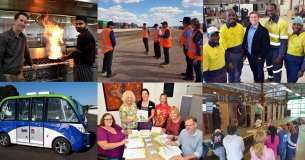 Latest News
Latest News
